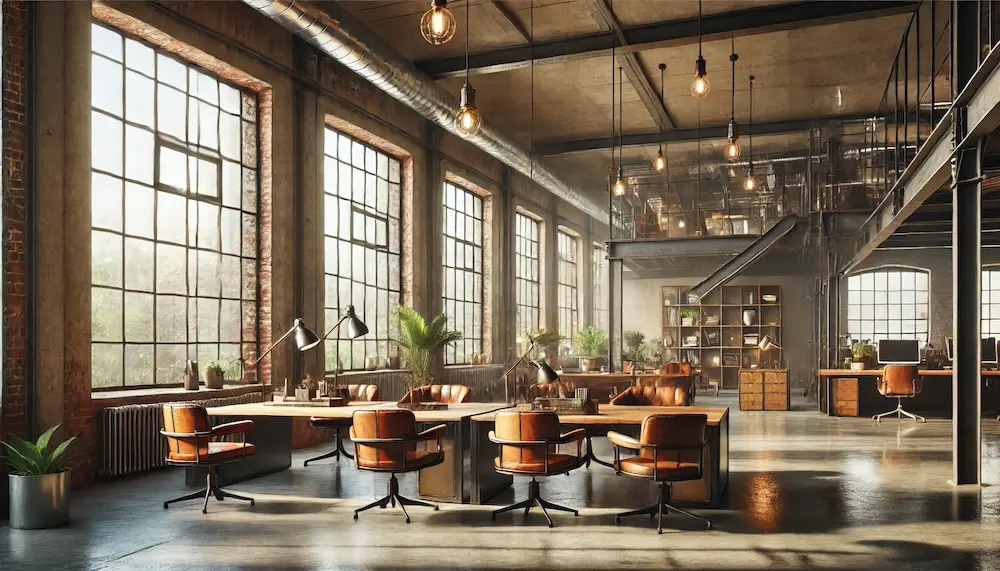Industrial chic office design combines the raw, utilitarian elements of industrial aesthetics with refined, modern touches to create workspaces that are both functional and stylish.
History and Origins of Industrial Chic Office Design
Emerging in the late 20th century, industrial chic design draws inspiration from the conversion of old factories and warehouses into functional spaces. This style gained popularity as urban areas repurposed industrial buildings into lofts and offices, celebrating structural elements like exposed brick, metal beams, and concrete floors. The fusion of rugged industrial features with contemporary design elements has led to the distinctive industrial chic aesthetic.
Key Features of Industrial Chic Office Design
- Exposed Structural Elements: Visible brick walls, steel beams, ductwork, and piping highlight the building’s industrial heritage.
- Combination of Wood and Metal: The interplay between raw wood and smooth metal surfaces adds warmth and sophistication to the space.
- Neutral Color Palettes: Utilizing shades of gray, white, and earth tones to maintain a minimalist and cohesive appearance.
- Industrial Lighting Fixtures: Incorporating metal shades, exposed bulbs, and pendant lights to enhance the industrial ambiance.
- Open Floor Plans: Designing spacious layouts that encourage collaboration and flexibility.
Applications of Industrial Chic Office Design
- Creative Agencies: The blend of industrial elements with modern design fosters an innovative and inspiring environment.
- Tech Startups: Open layouts and minimalist aesthetics align with the dynamic nature of tech companies.
- Co-working Spaces: The adaptable and trendy design appeals to a diverse range of professionals seeking flexible work environments.
Considerations When Designing an Industrial Chic Office
- Acoustic Management: Open spaces with hard surfaces can lead to noise issues; incorporating rugs, acoustic panels, and plants can help absorb sound.
- Comfort Balance: Adding plush furniture, cushions, and area rugs can soften the rugged industrial elements, creating a more inviting atmosphere.
- Lighting: While industrial fixtures contribute to the aesthetic, ensuring adequate and comfortable lighting for work tasks is essential.
- Personalization: Incorporating artwork, plants, and decorative items can add character and reflect the company’s identity.
Conclusion
Industrial chic office design offers a harmonious blend of historical industrial elements and modern sophistication, resulting in workspaces that are both functional and aesthetically pleasing. By thoughtfully integrating key features and addressing practical considerations, businesses can create environments that inspire creativity and productivity.
